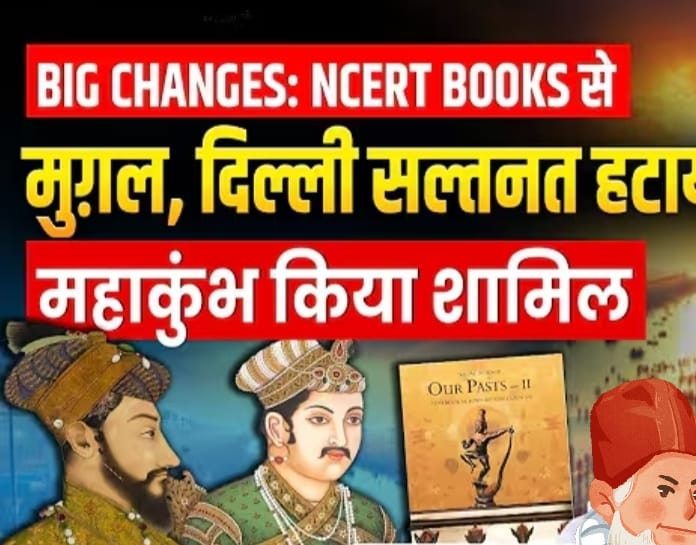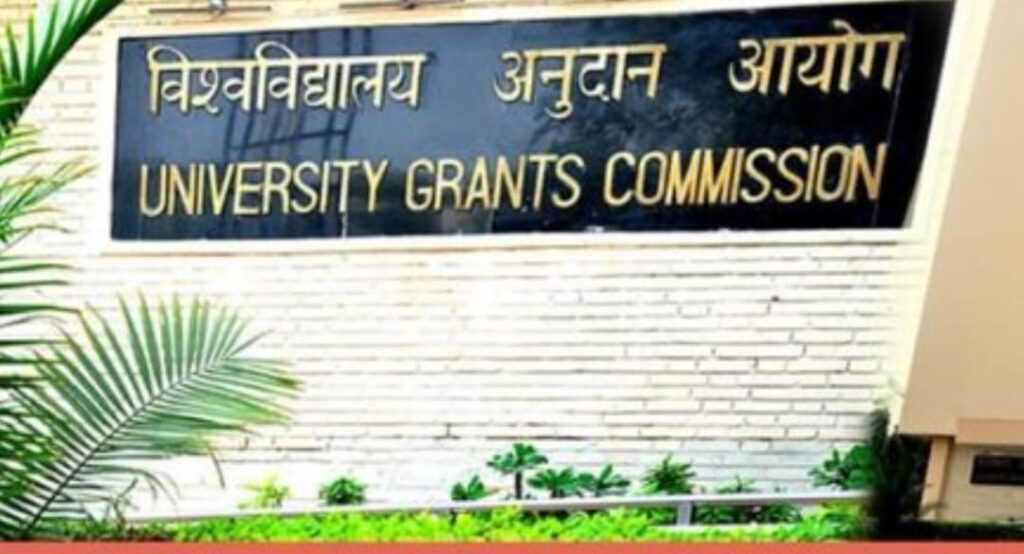

In a shocking move, the University Grants Commission (UGC) has virtually erased 600 years of Medieval Indian history (1200–1800 AD) from the syllabus of the UGC NET examinations. This follows a disturbing trend, with the National Council of Educational Research and Training (NCERT) previously removing the Delhi Sultanate and Mughal Empire from Class 7 textbooks, while curiously adding the Maha Kumbh but sidestepping its associated tragedies, such as stampedes. The deliberate sidelining of Medieval India—a period encompassing the Delhi Sultanate (1206–1526) and the Mughal Empire (1526–1757)—raises a critical question: Are we witnessing an orchestrated attempt to rewrite India’s history by erasing a vibrant and transformative era? In the so-called ‘Naya Bharat,’ will future generations simply skip the years between 1200 and 1800, as if they never existed?
The Saffronization Agenda: Erasing a Syncretic Past
The systematic exclusion of Medieval Indian history from academic curricula reeks of a broader agenda to saffronize India’s historical narrative. This period, marked by the rule of Muslim dynasties, was not merely a time of political conquests but a golden age of cultural, economic, and social progress. The Delhi Sultanate laid the foundations for centralized governance, while the Mughal Empire fostered architectural marvels, literary richness, and syncretic traditions that define India’s pluralistic identity. Yet, the UGC’s decision to omit this period from the NET syllabus signals a troubling bias. As one disappointed candidate remarked, “No questions from the Delhi Sultanate, Mughals were asked in not more than three questions. I felt like a loser because my specialization was not asked.” This exclusion sends a clear message: students specializing in Medieval India are being penalized, and their expertise is deemed irrelevant.
The UGC NET examination, meant to assess academic rigor, has instead become a battleground for ideological manipulation. By side lining Medieval India, the UGC is effectively telling young scholars that this period—spanning the reigns of iconic figures like Akbar, Shah Jahan, and Aurangzeb—is unworthy of study. Worse, it implies that India had no history worth noting between 1200 and 1800, a notion as absurd as it is dangerous.
A Syllabus Betrayed: The Death of Academic Integrity
The UGC’s own guidelines mandate that five questions be asked from each historical unit in the NET examination. Yet, candidates report a stark deviation from this promise. One student lamented, “They’re not following their own prescribed syllabus and weightage. Modern Indian history dominated Paper 2, but it was completely out of syllabus.” Another candidate, who appeared for the CUET PG exam in 2024, echoed this sentiment, noting the obsession with chronology-based questions that demand rote memorization over critical thinking. Even more alarming is the complete neglect of historiography—the study of how history is written and interpreted—a vital component of historical scholarship. As one student put it, “This is the funeral procession for history, started by these blind followers of Rightist ideology.”
This betrayal of academic integrity raises serious concerns. If the UGC, the custodian of higher education in India, can so blatantly disregard its own syllabus, what hope remains for fostering critical inquiry among students? The erasure of Medieval India from examinations is not just an academic oversight; it is a calculated move to suppress a period that challenges the monolithic narrative of a Hindu-centric past.
Who Gets Erased? The Icons of Medieval India
If Medieval India is deemed irrelevant, what happens to the towering figures and events that shaped this era? Consider the following:
• Maharana Pratap and Shivaji: These legendary warriors, celebrated as symbols of resistance, lived during the Mughal period. Without the context of Mughal rule, how do we understand their struggles and triumphs? Are they to be rebranded as figures of Ancient or Modern India?
• Tulsi Das and the Ramcharitmanas : The revered poet-saint Tulsi Das penned his magnum opus in the 16th century, under Mughal patronage. Will his contributions be relegated to obscurity?
• The Taj Mahal and Architectural Marvels: Built by Shah Jahan in the 17th century, the Taj Mahal is a global symbol of India’s cultural heritage. Are we to pretend it was constructed in some vague, timeless era? What of the magnificent monuments in Delhi, Agra, Fatehpur Sikri, Hyderabad, and Bijapur, all products of Medieval India?
• The Bhakti and Sufi Movements : The Bhakti saints, such as Kabir and Mirabai, and Sufi luminaries like Khwaja Moinuddin Chisti, Nizamuddin Aulia, and Amir Khusrau, wove a syncretic cultural tapestry that defines India’s spiritual ethos. Are these figures to be erased from history textbooks?
• Guru Nanak and the Birth of Sikhism : Guru Nanak, the founder of Sikhism, lived in the late 15th and early 16th centuries. Will Sikhism’s origins be stripped of their historical context?
• European Arrival and Trade : The arrival of Vasco da Gama in Calicut in 1498 and the Portuguese capture of Goa in 1510 marked the beginning of European colonialism in India. Are these pivotal moments to be ignored?
The erasure of Medieval India also dismisses the contributions of regional powers like the Vijayanagar Empire, a beacon of South Indian culture and resistance. One wonders how the states of Andhra Pradesh and Karnataka, proud of their Vijayanagar legacy, will react to this historical amputation.
Cultural Amnesia: The Cost of Historical Denialism
Medieval India was not a dark age but a period of remarkable progress. The Delhi Sultanate introduced administrative innovations, while the Mughal Empire oversaw economic prosperity, with India contributing nearly 25% of global GDP at its peak. The era’s literature, in Sanskrit, Persian, Brajbhasha, and regional languages, enriched India’s intellectual heritage. Poets like Amir Khusrau and historians like Abul Fazl left an indelible mark on Indian culture. The Bhakti and Sufi movements fostered social harmony, challenging caste hierarchies and promoting inclusivity. To erase this period is to deny the syncretic roots that make India unique.
Historical negationist, as seen in the UGC’s actions, risks fostering cultural amnesia. By pretending that 600 years of history never existed, we rob future generations of the ability to understand India’s pluralistic identity. As one student poignantly remarked, “New India is surely hellbent on losing the sheen of Great India.” The deliberate marginalization of Medieval India aligns with a broader ideological project to reshape the past in service of a narrow, exclusionary vision of the present.
Reclaiming India’s Medieval Legacy
History cannot be wished away, no matter how inconvenient it may seem to certain ideologies. The UGC’s decision to erase Medieval India from the NET syllabus is not just an academic travesty; it is an assault on India’s pluralistic heritage. The Delhi Sultanate and Mughal Empire, along with the Bhakti and Sufi movements, the Vijayanagar Empire, and countless other contributions, are integral to India’s story. To deny them is to deny the very essence of what makes India great.
It is time for us to ensure that future generations inherit a complete and honest understanding of their past. Only by embracing the richness of our history—warts and all—can we build a truly ‘Naya Bharat’ that honours its diverse and syncretic legacy. Let us not allow the funeral procession of history to march on unchallenged.
Hasnain Naqvi is a former member of the history faculty at St. Xavier’s College, Mumbai





